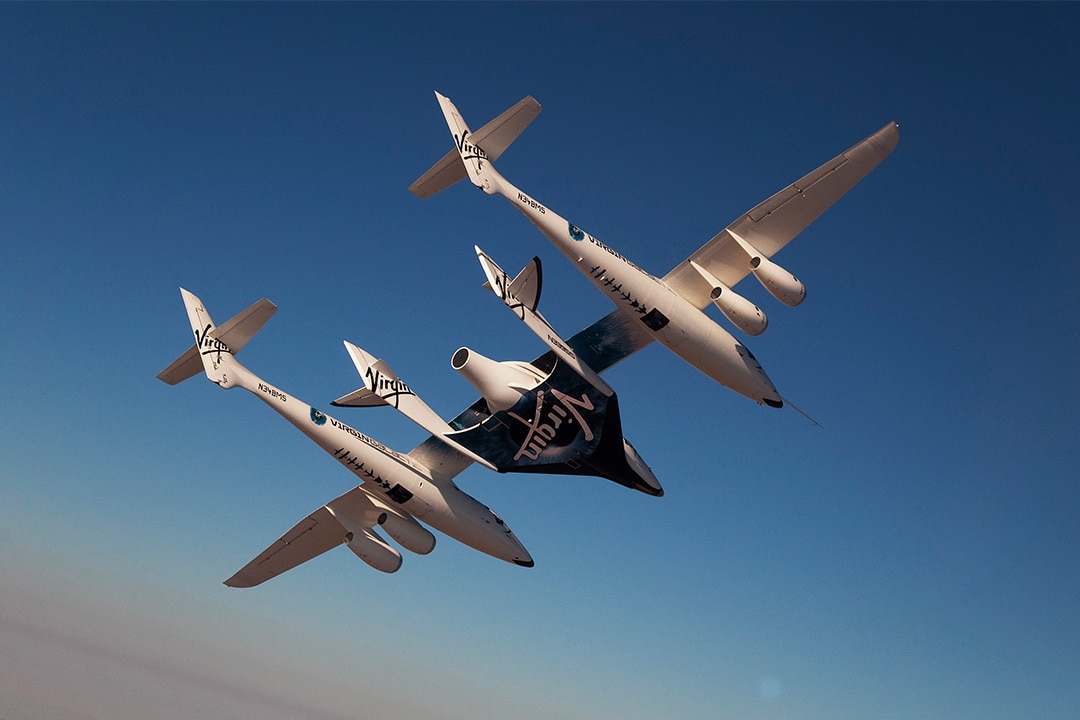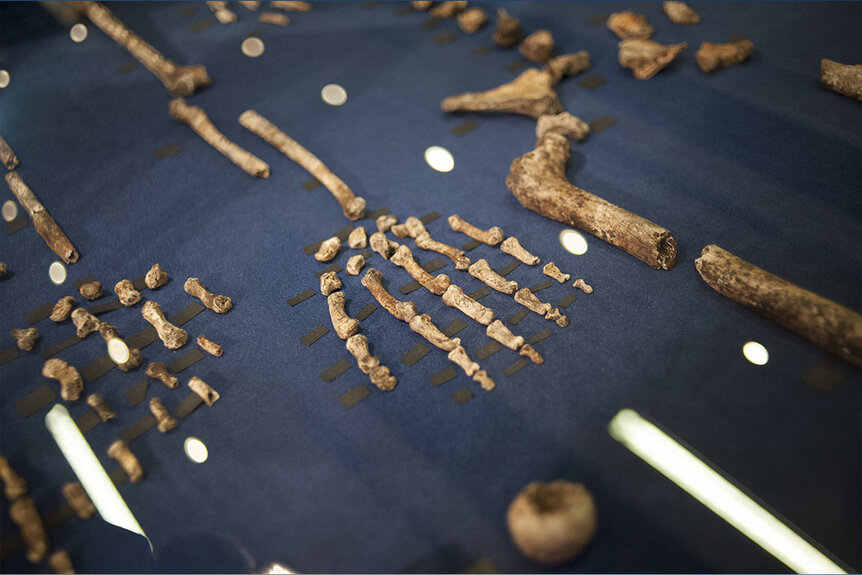Create a free profile to get unlimited access to exclusive videos, sweepstakes, and more!
Why Archeologists Are Furious Over Ancient Human Remains Being Sent to Space
Touching tribute or ethically irresponsible?

There is a moderately popular conspiracy theory (ill-supported as it may be) that ancient civilizations were built, in whole or in part, by extraterrestrials. The Ancient Aliens (streaming now on Peacock) hypothesis also suggests that ancient peoples had advanced technologies like helicopters and spaceships, granting them access to the sky and the stars. Along with ancient aliens, we have technologically advanced ancient astronauts.
The truth is, our ancestors were a lot smarter and a lot more capable than we like to believe. They didn’t need aliens to bend the world to their will, but they also didn’t build spacecraft. They did, however, push themselves into every available corner of this planet through an unprecedented exploratory spirit. Now, two of our ancient ancestors, Australopithecus sediba and Homo naledi, have left the planet for the first time and gone to the edge of space on a recent Virgin Galactic commercial flight. Ancient aliens, indeed.
Two Hominin Fossils Flew to the Edge of Space
Virgin Galactic’s third commercial flight, dubbed Galactic 03, carried billionaire Timothy Nash to an altitude of approximately 315,000 feet (60 miles or 96 kilometers), just shy of the Kármán line, the generally recognized boundary of space.
RELATED: Scientists Peer Inside the Great Pyramids Using Cosmic Rays
During the flight, Nash carried a bit of unusual cargo in the form of a narrow carbon fiber tube. Nestled inside were a fragmented fossil collar bone of Australopithecus sediba and a thumb bone from Homo naledi. The bones, discovered in South Africa’s Cradle of Humanity, were transported by Nash from South Africa to New Mexico’s Spaceport America.
The fossils were selected by Lee Berger, a paleontologist working in South Africa who has been involved in the discovery and study of both of the species selected for the mission. “The journey of these fossils into space represents humankind’s appreciation of the contribution of all of humanity’s ancestors and our ancient relatives. Without their invention of technologies such as fire and tools, and their contribution to the evolution of the contemporary human mind, such extraordinary endeavors as spaceflight would not have happened,” Berger said in a statement.
These specific fossils were chosen both because of their importance to the human story but also because they have been heavily documented. In essence, the folks involved ostensibly took into account the inherent risk of sending the bones to space and chose ones they were willing to lose or allow to suffer damage.
By the admission of everyone involved, taking the bones on the flight was a publicity stunt more than anything else. The export permit application to transport the bones and fly them to the edge of space notes some possible experimental merit to the flight, but the primary motive was “in the interest of promoting science and bringing global recognition for our science of human origins research in South Africa in particular." Virgin Galactic also notes, in Nash’s astronaut biography on their website, “this symbolic journey will be a fitting tribute to two species whose own explorations and endeavors, helped to give us the faculties and technologies to undertake the ultimate human journey - the journey into space.”
That’s a nice sentiment, but it is not one which is universally shared.
Scientists Raise Concerns Over Ethics of Fossil Space Flight
With the announcement, paleontologists and archaeologists from all over the world took to the internet to express their distaste. “To treat ancestral remains in such a callous, unethical way — to blast them into space just because you can — there’s no scientific merit in this,” said Robyn Pickering, a geologist at South Africa’s University of Cape Town, in an interview with Nature.
RELATED: Scientists finally solved Leonardo da Vinci’s 500-year-old bubble paradox
The European Society for the study of Human Evolution released a statement in opposition to the flight on X (previously known as Twitter), saying, “We do not see the scientific merit of this project and question the ethics of potentially damaging these unique materials. We urge the responsible stewardship and protection of these irreplaceable scientific resources.” And they weren’t alone.
The Association of Southern African Professional Archaeologists (ASAPA) issued a statement on Facebook which reads, in part, “While ASAPA supports efforts to promote southern Africa’s rich archaeological and paleontological heritage and make science more accessible to the public, this should not be done in a way that trivializes irreplaceable heritage, cultural items, or fossils. This venture was not intended to produce scientific outcomes, but instead, raises ethical issues regarding the treatment of our heritage (ancestral human remains) while exposing the fossils to unnecessary risk for publicity purposes.”
While the flight has concluded and the fossil remains were apparently undamaged, opponents still raise concerns about the precedent it sets and our obligation to preserve these priceless artifacts from our past for the future. Maybe we should leave the ancient astronauts where they belong, on the screen.
Catch Ancient Aliens, streaming now on Peacock!



























